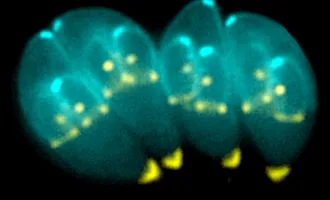Understanding Immune Tolerance
The immune system surveys the body by sampling proteins, called antigens, from both the human host and any invaders. So how does the immune system keep from attacking the host?
It achieves this through a concept called immune tolerance. The body creates immune tolerance to its own antigens by exposing developing immune cells to these host antigens. If any immune cells created react to the host antigens they are subsequently killed.
When immune tolerance does not work, autoimmunity results, causing diseases like Crohn’s disease or multiple sclerosis.
One important gene involved in immune tolerance is known as Aire, or Autoimmune regulator. In immune tissues, such as thymus, Aire drives the expression of many proteins that are normally only expressed in other organs, such as insulin, which are then shown to the immune system to interact with and kill any immune cells that react to host antigens. This gene is so important for immune tolerance that patients with a mutation in Aire have a disease known as autoimmune polyendocrine syndrome type 1, or APS-1.
Aire is expressed only in specific cells and tissues, but exactly how this expression is regulated was unclear until a recent paper published in the Journal of Experimental Medicine.
The work was done in the Anderson lab at UCSF, and combined multiple genomic techniques in order to identify other sequences that might regulate Aire.
“We started our process by using different publically available genomes to find regions that were near Aire [on the chromosome] that showed a lot of conservation,” said lead author, Taylor LaFlam, Ph.D.
DNA conservation refers to the concept that important genes and regions have sequences that are maintained, or conserved, across species.
LaFlam used DNA conservation combined with a technique known as ChIP seq to look at potential regulator sequences. ChIP takes advantage of another biological trick that indicates importance - many gene regulatory elements have chromatin modifications, or modifications in the bundled genomic DNA, that influence whether a gene is expressed at higher or lower levels
ChIP seq measures these modifications by combining chromatin immunoprecipitation and DNA sequencing. Chromatin immunoprecipitation allows for isolation of DNA sequences that have modifications. These isolated sequences then undergo DNA sequencing.
“The advantage of the ChIP seq is that some of these chromatin modifications are present only in cells in which the regulatory region is actually doing something. So by looking at chromatin from cells that express Aire and comparing them from a cell that is not expressing Aire, it allowed us to have a control to see which areas would stand out,” said LaFlam.
The authors found one region – ACNS1 - that had both a prominent ChIP seq signal and was conserved across multiple mammals.
LaFlam then asked two key biological questions – is ACNS1 sufficient to regulate Aire? And is it necessary to regulate Aire?
To check whether ACNS1 is sufficient to regulate Aire expression, the authors created a mouse model that expressed a reporter, in this case green fluorescent protein (GFP), which was under control of ACNS1. Therefore, wherever ACNS1 drives expression, it would cause GFP to express. They then checked where GFP was expressed in the mouse model and found that expression was restricted to a subset of Aire expressing cells.
Because not all Aire+ cells expressed GFP but GFP expression was restricted to Aire+ cells, this indicates that ACNS1 is sufficient to regulate a part of Aire’s expression pattern.
To check whether ACNS1 is necessary for Aire expression, the authors knocked out, or removed, ACNS1 in a mouse model and looked at Aire expression and for signs of autoimmunity.
In the mice lacking ACNS1, Aire expression was disrupted. There were also signs of spontaneous autoimmunity and damage in the retina, salivary glands and tear glands – indicating that ACNS1 is necessary for Aire expression.
How could the discovery of ACNS1 impact patients in the clinic?
“The most immediate clinical potential comes from the fact that although the majority of patients with symptoms of APS-1 are found with sequencing to have a mutation in the Aire gene, a small number do not have any apparent mutations there,” said LaFlam. “One possibility is that these individuals have mutations in ACNS1 or other regulatory regions that we have not characterized.”
More broadly, understanding how Aire is turned on could also help the immunology community better understand pathways that therapies could harness to modulate immune tolerance. While such therapies are only theoretical at the moment, understanding the inner workings of immune tolerance is the first step.


